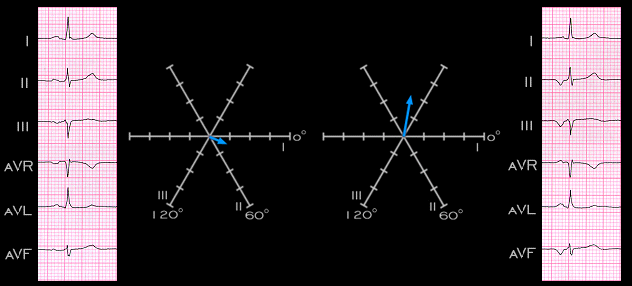
The P wave on the left, the sinus P wave, has an axis of +20 degrees. It is positive in leads I, II, and aVL; slightly positive in lead aVF, and negative in leads III and aVR. The P wave on the right, the ectopic P wave, is inverted in leads II, III and aVF, positive in aVL and slightly positive in lead I with an axis of -80 degrees. This indicates that the ectopic focus depolarizes the atrium with a wave front that is directed superiorly and from right to left, suggesting that it is located in the inferior portion of the atrium. This is sometimes referred to as a coronary sinus rhythm because stimuli applied in the region of the coronary sinus ostium induce P waves with this morphology.
